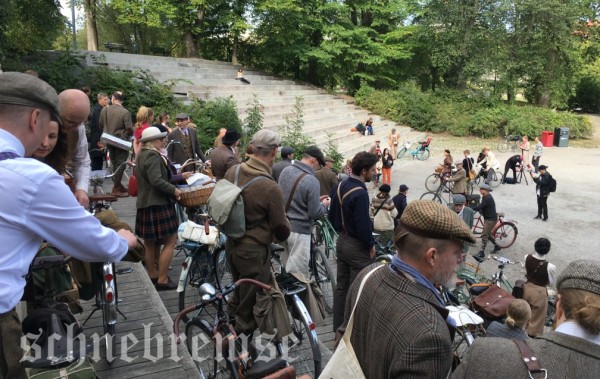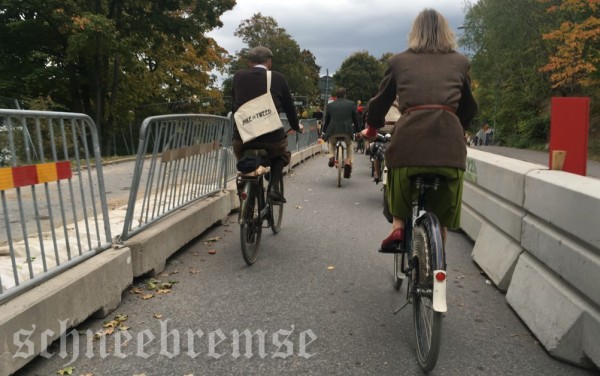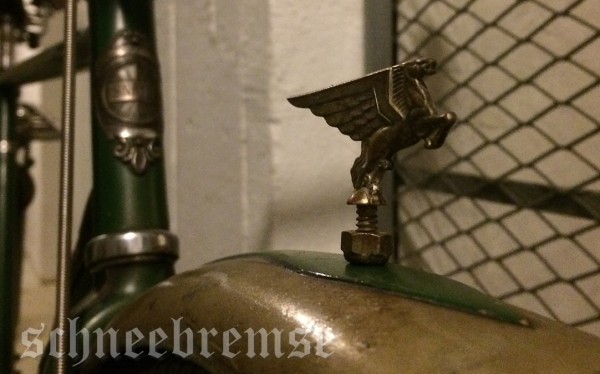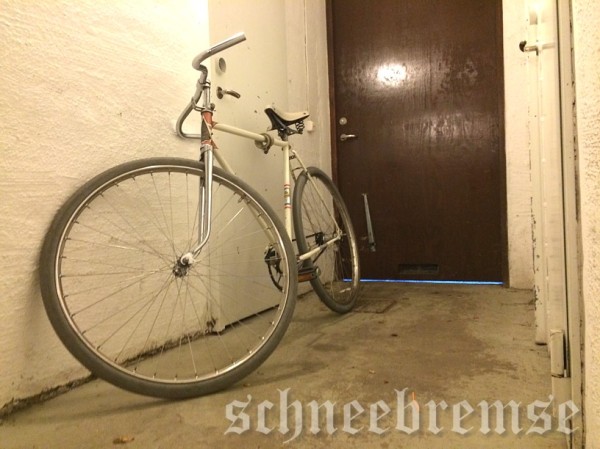I bought a bicycle earlier this summer, after all projects and every problem with parts that do not fit properly. I realized that it would have been cheaper and better for me to buy a complete bicycle from the start. Because this idea I had of using old part that came from my grandfathers old bicycle many years ago. All projects I had was either dificult to assembly or did not “feel” right. But one day I saw an ad on internet of an old bicycle for sale in the south parts of Stockholm in a shop I had visited earlier. It was an old Swedish “Snabb” (quick) bicycle from the mid 1930’s. It looked to be in a good original condition with ornaments on the frame and with the original green paint with the golden pinstriping details still intact.

The badge says, “Snabb, Prima Svenskt Fabrikat”. Translation: (Quick, excellent Swedish manufacturing)
I decided to visit the shop to have a closer look. After my visit I did a quick decision, the bicycle was perfect for me. Good condition, all important parts was there. So I simply paid for the bicycle and rode it back home, it was a good ride, smooth and everything worked as a charm. The bicycle was in perfect condition for what I had in mind. The idea of fixing up the bicycle as an homage to my grandfather and his passion for bicycles. After all he was riding them all year, no matter the weather, summer, wither, sun and rain. He was always riding his bicycle. In a way, the Snabb that I bought could have been a bicycle that he could have used when he was living in the central parts of Stockholm back in the mid 1930’s. That was the spirit of the idea I had.
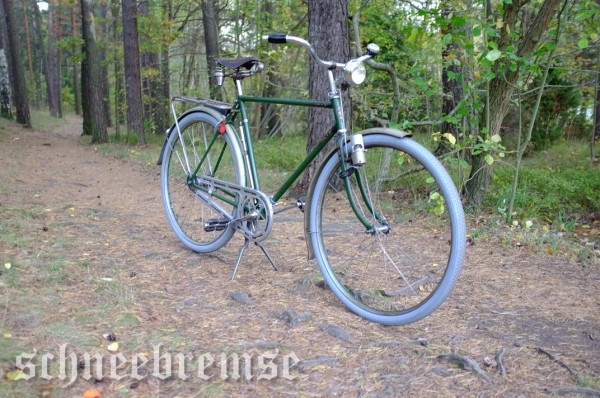
Nice mid 1930’s lines and look
I changed the small black 1920’s style headlight to a chromed bubble style headlight that was common in the mid -30’s. In my opinion it fitted the style of the bicycle better. I changed the seat to the old worn seat that was mounted on my grandfathers bicycle and that I remembered from when I was a kid. The bell, bicycle pump, the pump holders and other small parts all added up to an really great and lovely bicycle. There was even an old trouser clip that was an accessory back in the days. I do not use that, but I clamped it on the headlight mount. A small and nice detail.
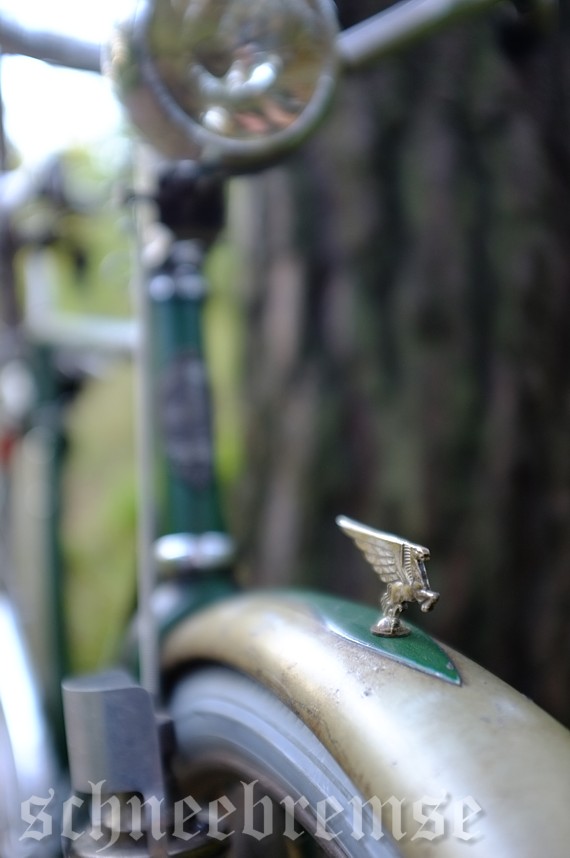
The headlight and the cover for the dynamo, all guarded by the Pegasus on the mudguard

Original style lock with my grandfathers key tab attached.
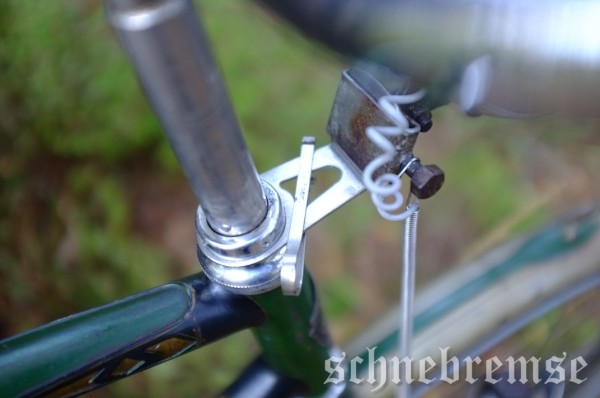
The trouser clip from 1930’s that I mounted on the headlight bracket.

My grandfathers old saddle, worn and beaten up. But lots of memories for me.
But then I realized that on top of the frame were 2 holes and an outlined shadow of an earlier plate with the owners name. That was a very typical extra feature in Stockholm at that time. It was more common to have a ring around the stem to the handlebars with your name and address. But in Stockholm it seems that this frame mounted plate was common. What should I do? I needed a plate to cover the already missing plate. But where to find a nameplate from the -30’s now? Even with or with out a name engraved on the plate it is an impossible mission. Then I remembered that a friend has, like me, also an Rex tandem with the nameplate from one of the first owners. I asked my friend politely if I could borrow the plate to make a copy of it, I would be very careful with the plate since it is unique. He said yes!
By coincidence there is an silver shop that makes jewellery and art in silver in the area where I live. I went there and asked him about the name plate and if it would be possible to do a replica of it. Since the bicycle had the colours of green, black and gold I thought that brass would be a great material for the plate. The fellow at the shop said it sounded like a fun project. He loved to help me out.
For many years I had a brass casing from a 20mm air defence gun in a pile of “good to have” things. The brass shell was curved just like the frame on the bicycle so it would make a great nameplate. The silver shop fellow started to work on the shell but quickly realized that the shell was made in a way that never would work, it was to thick in the bottom end of the casing (designed to withstand an gunpowder explosion). So he decided to take an old cracked cymbal he had as a drummer many years ago and cut a piece out of the cymbal instead. He polished it and did a wonderful work on the plate, making it to look like the style of 1930’s old plates with my grandfathers name and the address he had back in 1937.

The brass name plate. Looks really good and matches the colour of the frame and pinstriping.
A few weeks later I had a magnificent hand made plate in brass mounted on the frame of the bicycle. Of course it fitted to the holes and covered up the shadow on the frame, it looked a bit “new” and polished. But after a few days the brass started to oxidized and looked worn. A brass plate on a British racing green bicycle with details painted in black and gold, it looks really good.
After all parts were fitted to the bicycle, even the small key tab that my grandfather used to have, I was ready for a test ride. If it was good before, it was even better now! The Snabb made a popular entry at the Bike in Tweed 2016 even. I got many compliments for the looks and condition of the bicycle.
It is a keeper!

Is there any one who recognizes the location of the photos?



